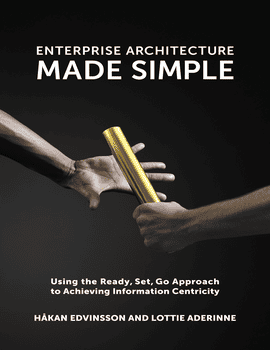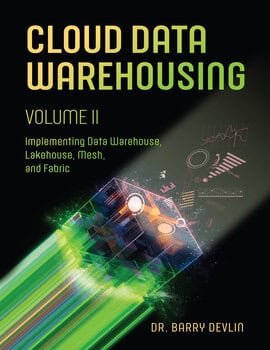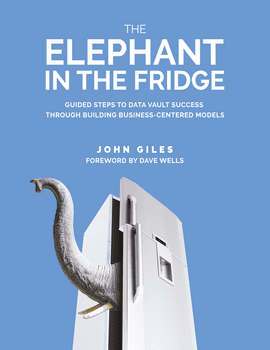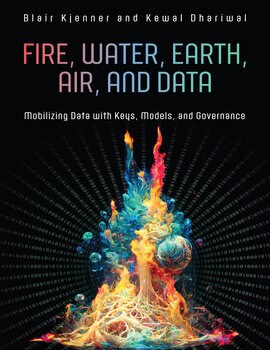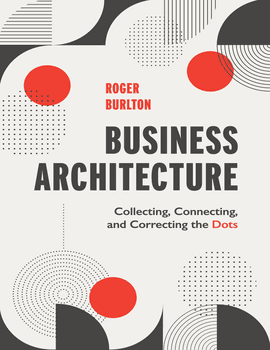Enterprise Architecture Made Simple
Enterprise Architecture Made Simple: Using the Ready, Set, Go Approach to Achieving Information Centricity, by Håkan Edvinsson and Lottie Aderinne
Learn how to institute and implement enterprise architecture in your organization. You can make a quick start and establish a baseline for your enterprise architecture within ten weeks, then grow and stabilize the architecture over time using the proven Ready, Set, Go Approach.
Topics
Introduction
How to derive the architecture and its governance
What is the problem?
Ready, Set, Go overview
Conventions used in this book
About the authors
Chapter 1: READY
City plan basic elements
1.1 Initiating the assignment
Purpose of EA and EA awareness
Executive sponsor and management commitment
Participants
Risks
Gathering knowledge and getting started
Checklist: Results of the initiation
1.2 Modeling the business processes and information
Modeling business processes
Modeling the business information structure
Oh no, not data modeling!
Business information modeling basics
How to produce a business information model
Documenting a business information model
Expressing business expectations
Expressing business expectations using Osterwalder’s Business Model Canvas
Expressing business expectations using Ross’s Operating Model
Linking business processes to objectives and values
1.3 Analyzing consequences and opportunities
Identifying entity groups
Determining information life cycle type
Category information
Resource information
Business event information
Detail operational transaction information (“big data”)
Distinguishing between resource and event entity groups
Describing the processes’ need of information
Describing existing systems
Analyzing opportunities and assessing benefit
1.4 Designing the optimum architecture
Using business capabilities
Understanding the process and system matrices
Forming ideal blocks in the architecture matrix
Forming a realistic architecture
1.5 Planning the enterprise architecture deliverables
Short-term EA planning
Long-term EA planning
Establishing a roadmap
Compiling a city plan
1.6 Summary of the Ready step
Chapter 2: SET
Getting set
2.1 Identifying stakeholders and target groups
Conducting a SWOT analysis: analyzing strengths, weaknesses, opportunities, and threats
Formulating targets for EA
Securing support from management
2.2 Forming an EA-oriented development environment
EA activities in business development
EA activities when forming an IT vision and IT strategy
EA activities to perform when forming EA and IT plans
EA activities when executing development projects
2.3 Forming the EA ownership
Entity owner and entity manager
Who decides, who influences?
Form a decision process
2.4 Organizing the enterprise architects
Describing roles, mandates, and responsibilities
Describing competence needs and recruiting
Establishing prioritization rules for projects
Identifying triggers and warnings
2.5 Identifying requirements for EA tools
Forming meta-models
Identifying rules for models
2.6 Communicating and planning
Key success factors
Chapter 3: GO
3.1 Conducting enterprise architecture work in practice
Participating in projects
Working with information models and conceptual models
Working with information models for the architecture and for requirements specification
Supporting projects relating to requirements specifications
Providing support for systems acquisitions
Developing triggers and actions
Trigger: a start date for a project is reached
Trigger: a project runs out of control
Trigger: a new business model, strategy, or plan is published
Trigger: a new ERP system is acquired
Trigger: a new or updated business plan is published
Trigger: a new person is appointed to a key decision-making role
Trigger: a company is acquired
Trigger: a new product or way of doing business is introduced
Trigger: a new (unplanned) project is initiated
Trigger: a new systems development method is selected
Trigger: a new key partner needs to be chosen by management
Managing models
Communicating target achievements
Developing standard/generic models
3.2 Improving the EA work
Monitoring the external environment
Fine-tuning entities and processes
Improving regulations
Appendix: THE ZACHMAN FRAMEWORK AND OUR EA PROCESS
Reading this book will:
- Give you directions on how to institute and implement enterprise architecture in your organization. You will be able to build close relationships with stakeholders and delivery teams, but you will not need to micromanage the architecture’s operations.
- Increase your awareness that enterprise architecture is about business, not information technology.
- Enable you to initiate and facilitate dramatic business development. The architecture of an enterprise must be tolerant of currently unknown business initiatives.
- Show you how to get a holistic view of the process of implementing enterprise architecture.
- Make you aware that information is a key business asset and that information architecture is a key part of the enterprise architecture.
- Allow you to learn from our experiences. This book is based on our 30 years of work in the enterprise architecture field, colleagues in Europe, customer cases, and students.
We do not pretend to cover all you need to know about enterprise architecture within these pages. Rather, we give you the information that is most important for effective and successful guidance. Sometimes, less is more.
If your company is about to make a major change and you are looking for a way to reduce the changes into manageable pieces—and still retain control of how they fit together—this is your handbook. Maybe you are already acting as an enterprise architect and using a formal method, but you need practical hints. Or maybe you are about to set up an enterprise architect network or group of specialists and need input on how to organize your work.
The Ready-Set-Go method for introducing enterprise architecture provides you, the enterprise architect, with an immediate understanding of the basic steps for starting, organizing, and operating the entirety of your organization’s architecture. Chapter 1: Ready shows how to model and analyze your business operations, assess their current status, construct a future scenario, compare it to the current structure, analyze what you see, and show the result in a city plan. Chapter 2: Set deals with preparing for the implementation of the architecture with governance, enterprise architecture organization, staffing, etc. This is the organizing step before beginning the actual work. Chapter 3: Go establishes how to implement a city plan in practice. It deals with the practicalities of working as an enterprise architect and is called the “running” step.
The common thread through all aspects of the enterprise architect’s work is the architect’s mastery of a number of tools, such as business models, process models, information models, and matrices. We address how to initiate the architecture process within the organization in such a way that the overarching enterprise architecture and architecture-driven approach can be applied methodically and gradually improved.
About Håkan and Lottie
The authors have combined more than three decades of experience in enterprise architecture, business development, and business modeling. They have introduced enterprise architecture to numerous different sectors and areas of operations. Both have been active as consultants and educators; they have also been examiners for a training course that certifies enterprise architects. In these roles, they have established the foundations of the enterprise architecture concept for numerous individuals and businesses. Håkan Edvinsson is currently the CTO and partner of Informed Decisions and Lottie Aderinne is the owner and partner of Vilante Consulting. Both companies provide consulting services for EA and change management projects.
Faculty may request complimentary digital desk copies
Please complete all fields.
